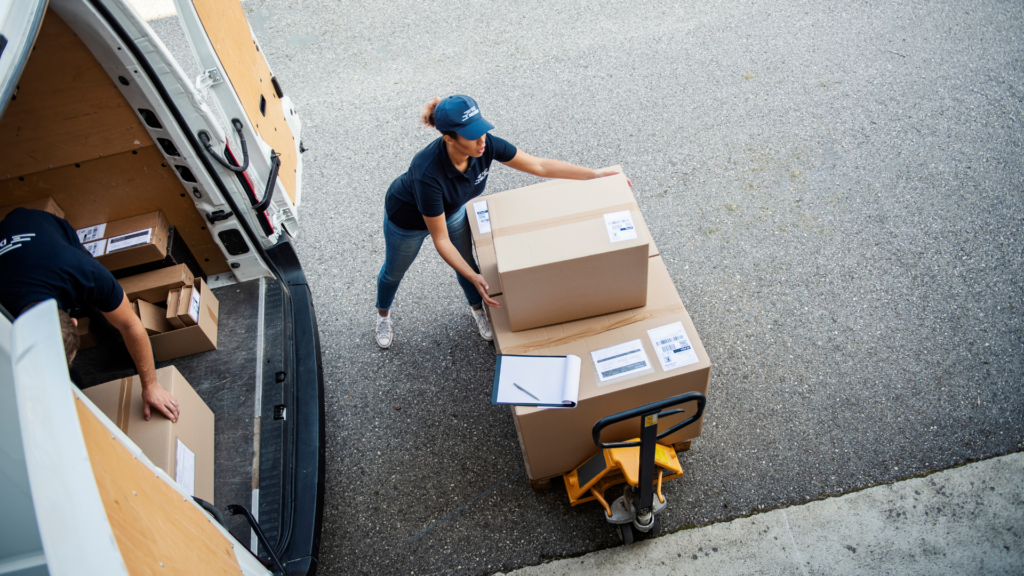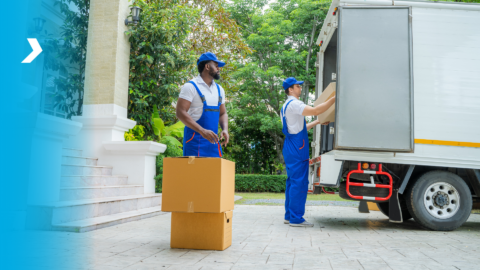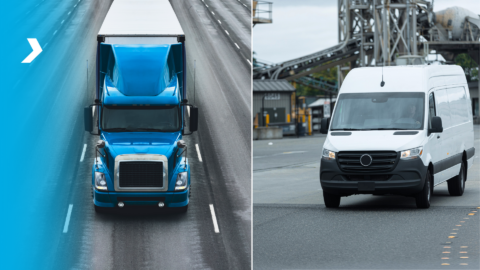Understanding Last-Mile Delivery: Why It’s Crucial and How Companies Optimize It

Last but not least, last-mile delivery represents the shortest yet the most critical component of the modern supply chain. It is the final step of the product journey, from a distribution center to the customer's doorstep, which can make or break the customer experience. Moreover, any delay or improper product condition caused by an inefficient delivery process may not only break the brand's reputation but also lead to additional expenses. To address these challenges, businesses are turning to innovative solutions like Small Truck Load (STL). Let's delve into the ultimate guide to last-mile delivery and discuss the role of STL services in achieving a perfect balance between customer delight and cost control.
Breaking Down Last-Mile Delivery
As its name indicates, last-mile delivery constitutes the final stage in the supply chain process. It involves transporting goods from a distribution center to the customer's destination, ranging from a residential address to a business establishment. This phase carries immense significance and presents multifaceted challenges, making it a pivotal area for optimization within the logistics industry:
- Timely Delivery: Delays in delivery stand as one of the foremost challenges in last-mile delivery. With customers now accustomed to lightning-fast delivery times, businesses are under immense pressure to meet these expectations promptly. Late deliveries can swiftly result in customer dissatisfaction, ultimately impacting a company's reputation.
- Cost Management: This is another critical challenge. The expenses related to last-mile delivery, including fuel, labor, and vehicle maintenance, can escalate rapidly. Striking a balance between controlling these costs while simultaneously offering competitive delivery rates is a constant and delicate juggling act for logistics providers.
- Navigating Urban Areas: Urban areas with their heavy traffic add yet another layer of complexity. The congested streets and intricate logistics of urban environments present unique challenges. Finding efficient delivery routes while avoiding traffic bottlenecks is a struggle for last-mile delivery operations.
Effective last-mile delivery is not solely about getting products to customers; it's about exceeding their expectations. When executed adeptly, it has the power to enhance customer satisfaction significantly and fortify a company's reputation. By conquering these challenges, businesses can not only meet or exceed customer expectations but also cement their place as leaders within the competitive market.
The Crucial Role of STL in Last-Mile Delivery
Small Truck Load (STL) services have positioned themselves as a game-changer in last-mile delivery business. STL involves using smaller, more agile vehicles like sprinters or box trucks, typically suited for transporting 3-5 pallets of cargo, providing a set of advantages over traditional shipping methods:
- Faster Delivery: Unlike larger delivery trucks that carry more goods and therefore often make multiple stops, STL vehicles take shorter routes and make fewer stops, allowing them to deliver products faster. Taking into account the ever-growing demand for rapid deliveries in today's consumer-driven economy, such exclusive freight travel appears especially crucial.
- Cost-Effectiveness: Smaller vehicles consume less fuel, require fewer personnel to operate, and have lower maintenance costs. Businesses that opt for STL can significantly reduce their operational expenses, making it an attractive option to optimize their delivery processes.
- Flexibility in Scheduling and Routing: STL services offer a high degree of flexibility in scheduling and routing because of smaller vehicle size and their lower impact by road infrastructure limitations. This flexibility allows businesses to adapt quickly to changing delivery needs and make real-time adjustments to optimize their routes.
These benefits have already made many businesses across various industries successfully integrate STL into their last-mile delivery strategies. For instance, local grocery stores use STL to deliver fresh products, ensuring customers receive quality products promptly. E-commerce giants also rely on STL to guarantee the swift delivery of small packages, enhancing their overall customer experience.
To successfully integrate STL into your existing delivery model, consider the following tips:
- Evaluate Your Delivery Needs: Analyze your specific delivery needs to determine where STL can be most effective. Identify routes, products, or delivery scenarios where smaller vehicles would provide the greatest benefit.
- Invest in Technology: Implement route optimization software and tracking systems to maximize the efficiency of your STL operations. These tools can help you plan routes, monitor deliveries in real time, and make necessary adjustments on the go.
- Train Your Personnel: Ensure your delivery personnel are trained to operate smaller vehicles safely and efficiently. Safety should always be a top priority.
- Stay in Touch With Your Customers: Keep customers informed about the advantages of STL, such as faster deliveries and reduced environmental impact.

Tips, SOPs, and FAQs for Optimizing Last-Mile Delivery
As previously mentioned, incorporating STL into your daily delivery routing may present specific challenges. Nevertheless, the forthcoming suggestions can help facilitate this transition:
- Employing Advance Technology: Implementing route optimization software and real-time tracking can help you streamline delivery routes and provide customers with accurate delivery times.
- Utilizing STL: Integrating Small Truck Load services into your existing delivery model can benefit from the advantages of faster deliveries and cost savings.
- Improving Communication with Customers: Keeping customers informed at every step of the delivery process is an excellent strategy for building solid relationships and reputation.
- Implementing SOPs (Standard Operating Procedures): Incorporating STL services in last-mile delivery requires well-defined operating procedures. These should include but not be limited to guidelines on vehicle maintenance, driver training, advanced safety protocols, and improved customer interaction.
FAQs:
How can STL reduce the cost of last-mile delivery?
STL can reduce delivery costs by using smaller vehicles with lower operational expenses, efficient route planning, and reduced labor requirements.
What are the advantages of STL over traditional delivery vehicles?
STL offers faster delivery times, cost savings, and greater flexibility in adapting to changing delivery needs compared to traditional shipping methods, such as FTL( Full Truck Load) and LTL(Less than Truck load).
Conclusion
Optimizing last-mile delivery is not just a cost-saving measure; it's a strategic move that can transform your business and drive it to a new level of success. Small Truck Load (STL) services are at the forefront of this transformation, offering speed, cost efficiency, and flexibility unmatched by any traditional shipping method like FTL or LTL. As businesses strive to meet the ever-increasing demands of customers, integrating STL shipping into your last-mile delivery routine stands out as a viable solution.
Boost your last-mile delivery performance with Expedite All, the ultimate solution for speed and efficiency. Contact us today to learn more.


